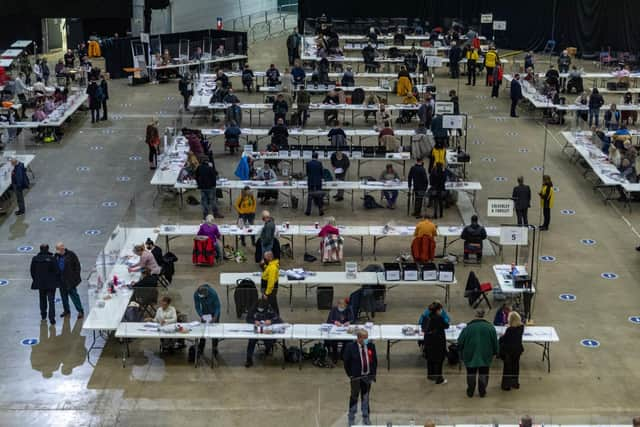Leeds local elections: What is it, where can I vote and what could happen?
and live on Freeview channel 276
The ruling Labour group is only three seats above an overall majority and is defending 17 seats.
High profile councillors standing include Conservative group leader Andrew Carter, executive board members Debra Coupar and Jonathan Pryor, and long-serving Elizabeth Nash, who has been on the council since it was formed in 1974.


Advertisement
Hide AdAdvertisement
Hide AdHere is our guide to the biggest day in the Leeds political calendar.
What is it?
Leeds City Council has 99 councillors, split over 33 small areas across the city, known as wards. You maths boffins may have worked out that means each ward has three councillors.
Each councillor serves a term of four years, with one from each ward taking it in turns every May to defend their seat, with one "fallow" year, where no election takes place, during each four year cycle.
This is, as you might have guessed by now, an election year, with 33 seats up for grabs.
When and where can I vote?
Advertisement
Hide AdAdvertisement
Hide AdIf you have registered to vote, you should have had a polling card posted through your letterbox at some point in the past few weeks - this will have the address of your polling station.
Each polling station is open on Thursday from 7am to 10pm.
You don't have to bring any form of identification with you either, as Government voter-ID plans are not set to come in until 2023.
Who can I vote for?
Leeds City Council has published a list of candidates for each council ward on its website, which you can access by clicking here. If you don't know which ward you live in, this will be written on your polling card.
Don't worry if you can't remember the names of candidates when you get to the polling station, as each one, along with their party, will be listed on your ballot paper.
Why should I vote?
Advertisement
Hide AdAdvertisement
Hide AdIn order for the public to hold politicians accountable, they are able to vote them in and out of office based on their performance. If nobody voted, it would pretty much give politicians a free pass to do whatever they want in your name.
What could happen?
It's often worth looking at how many seats each party is defending to get a good idea of what could feasibly happen. Labour currently holds 53 seats - three ahead of the number needed for an overall majority (50).
This year Labour is defending a massive 17 seats, compared to just eight for the conservatives and three for the Lib Dems. However, unlike in recent years, Labour appears to be ahead of the Conservatives in the national polls, and with Prime Minister Boris Johnson's approval ratings tanking over the past year, Labour might well have their eyes on some gains. It's also worth noting that two "independent" seats are up for grabs, both of which voted Labour at the last elections, with neither incumbent standing.
But forget about all that - let's talk about best and worst case scenarios for each party.
Advertisement
Hide AdAdvertisement
Hide AdIf the Conservatives - currently the second largest party - were to win every single Labour seat up for grabs, while holding onto their own, it would put them on 41 seats - not enough for an overall majority.
However, if they won every single seat being contested, it would put them on exactly 50, which would be enough for them to take sole control of the council - although this would be the kind of result never seen in the history of democratic politics.
In a similarly unlikely scenario, if Labour won every seat available, it would put them on 70 out of 99 seats.
What definitely will happen?
After all voting has taken place, the ballots will be taken to the count, where they will be, surpsise surprise, counted by staff. These usually take place overnight, but Leeds City Council has made the unusual decision to hold the count during the following day.
Advertisement
Hide AdAdvertisement
Hide AdThe first declaration is expected to be announced at around 11.30am, with the final one at around 4.30pm. So it is likely that by the time you've finished work, you'll know who's in and who's out.
How can I find out what happened?
The Yorkshire Evening Post website will have a liveblog running during the count, so you can keep up to date. You can also follow our local democracy reporter David Spereall, or myself on Twitter at @DavidSpereall and @ReporterRichB, as we will both be posting live updates from the count.
